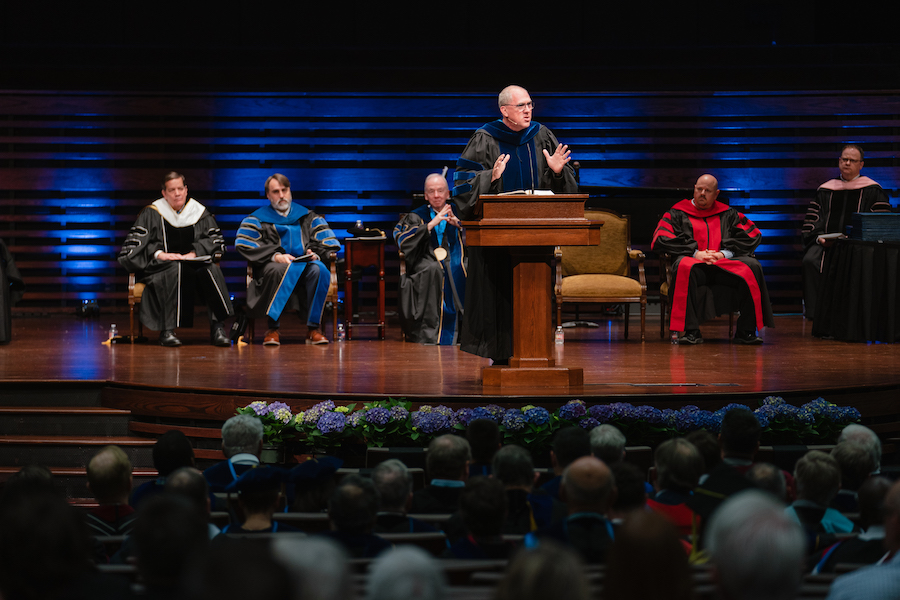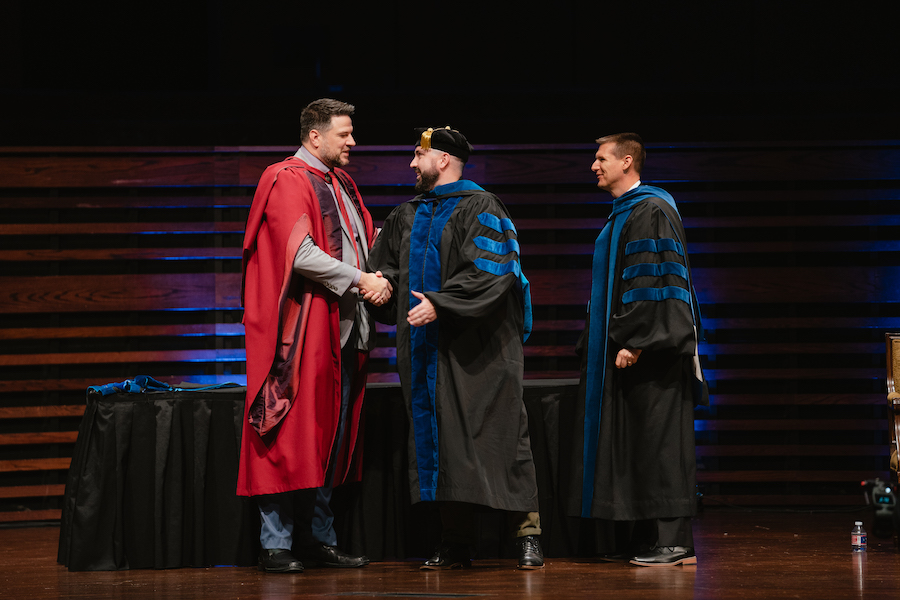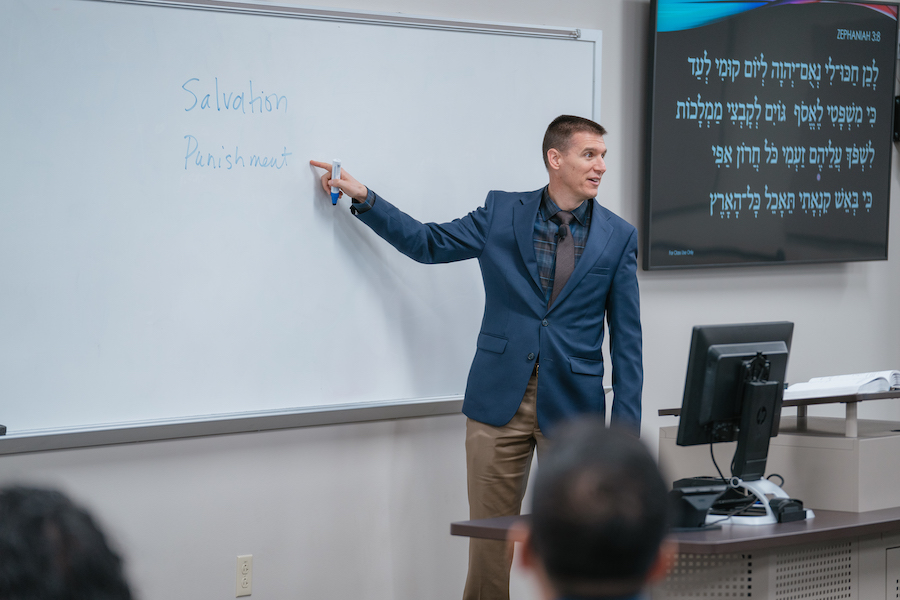ESSAY: What hath the church fathers to do with your local church?

Editor’s Note: The following was written by Stephen Presley, associate professor of church history at The Southwestern Baptist Theological Seminary. This article originally appeared in the fall 2019 issue of Southwestern News (pg. 52-55).
Late in the summer of this past year, the Catholic University of America hosted a spirited debate between two religious conservatives, Sohrab Ahmari of the New York Postand David French of The National Review. While both of these men possess strong religious convictions, they represent conflicting visions for contemporary conservative participation in government and society.
On one hand, French believes in the traditional route of working to uphold civil liberties and defending viewpoint neutrality in the public square. If Christians continue to defend the rights of others, they will they be able to enjoy their religious freedoms.
Ahmari is not so convinced these rights and privileges are guaranteed in the coming age of liberalism. He believes, on the other hand, the time for a more genteel approach is over and that conservative Christians must embrace the culture war and confront the tide of extreme liberalism by working to appoint religious conservatives to all levels of civil government. The debate clearly touched a nerve and has since gone viral, inspiring countless responses and rebuttals.
It seems that in the present cultural moment, religious conservatives feel caught between opposing visions of cultural engagement and, if we press their arguments to the extremes, choosing between surviving within our denominational monasteries or embracing the call to suffer as missionaries in the liberal public square.
As a professor who teaches and researches in early Christianity, I found the debate fascinating, especially when the conversation naturally gravitated toward discussions of the marginalized church in early Christianity.
Constantinian Shift
Throughout the debate, there were several references to the famous “Constantinian shift” that redefined the nature of church-state relations in the fourth century, and the debaters speculated how the ancient, persecuted Christians thrived amid a hostile Roman culture. Their conversation, however, glossed over the complexities of early Christian cultural engagement and, more importantly, one of its most crucial features: a serious call to discipleship.
In other words, as a marginalized community, the early church understood that cultural engagement began not in the public square or choosing between fight or flight, but in fashioning a Christian identity through the gathered worship and regular discipleship withinthe church. The early church believed that converts must be formed in the basic contours of Christian belief and practice as the basis for any participation in a strategy of cultural engagement.
Of course, this impetus for serious catechesis was laid down in the Scriptures, including the words of the Lord, who commanded His followers to go and “make disciples of all nations, baptizing them in the name of the Father and of the Son and of the Holy Spirit, teaching them to observe all that I have commanded you” (Matthew 28:19). Paul shares similar sentiments in his famous charge to Timothy, “what you have heard from me in the presence of many witnesses entrust to faithful men, who will be able to teach others also” (2 Timothy 2:2).
In the second and third centuries of the church, the seed of these Scriptural commands flower into works on discipleship including: the Didache, Irenaeus’ On Apostolic Preaching, Hippolytus’ On the Apostolic Teaching, Cyril’s Catechetical Lectures, and Augustine’s Enchiridion, or On Faith, Hope and Love. The marginalized communities of ancient Christianity understood all too well that any attempt at political or social engagement necessitated Christians to always “be prepared to make a defense to anyone who asks you for a reason for the hope that is in you” (1 Peter 3:15).
The Sermon, Irenaeus and St. Augustine
The curriculum of early Christian discipleship begins with an initial call to follow the teachings of Christ. For example, the Didache, an early Christian manual on church order that prepared new initiates for baptism, starts with a challenge for ancient Christians to walk the path of life: “There are two ways, one of life and one of death, and there is a great difference between these two ways.”
Christians embrace the way of life that is described using the imagery of Scripture, especially the Sermon on the Mount (Matthew 5-7) and the Decalogue. The way of death, on the other hand, reads like one of Paul’s vice lists and reflects the sinful behaviors prevalent in the culture outside the church. Those who choose to join the Christian community must recognize their new path and new identity and choose to walk that path regardless of which way the cultural winds blow.
Other early Christian discipleship texts, such as Irenaeus’s On Apostolic Preaching or Augustine’s On Faith, Hope, and Love, provide a window into the curriculum of the early Christian catechetical classroom. The former recognizes that the Christian life demands holistic theological and moral formation of the human person. Irenaeus writes, “For what use is it to know the truth in words, only to defile the body and perform evil deeds? Or what profit indeed can come from holiness of body, if truth is not in the soul?”
The rest of Irenaeus’ short discipleship manual is an introduction to the storyline of the Bible and a summary of the work of Christ that new converts need to know in order to live out their faith. Augustine’s text On Faith, Hope, and Love is more developed and discusses the key elements of early Christian catechesis: The Lord’s Prayer, Apostles Creed, and Ten Commandments.
Throughout the history of the church, these three elements most often comprise the basic catechetical curriculum.
(Always) Ready to Engage with the Faith
As early Christians were fashioned through the moral and theological contours of the faith, these convictions raise important questions about their views of citizenship and what it looks like for Christians to live out their faith in all aspects of their lives.
The second century text entitled the Epistle to Diognetus, for example, frames the tension in this relationship, saying: “For Christians are not distinguished from the rest of humanity by country, language, or custom. … They live in both Greek and barbarian cities, as each one’s lot was cast, and follow the local customs in dress and food and other aspects of life, at the same time they demonstrate the remarkable and admittedly unusual character of their own citizenship. They live in their own countries, but only as aliens; they participate in everything as citizens, and endure everything as foreigners. Every foreign country is their fatherland, and every fatherland is foreign.”
Other early Christian texts, such as Hippolytus’ On the Apostolic Teaching, give specific examples of how Christian converts had to reconsider the ways that theological and moral convictions shaped their involvement in the economic and social patterns of the culture. The early church reflected on their occupations, participation in civic life, social gatherings, or cultural events and the ways that any of these professions or activities might offend Christian morality.
Answering these questions on the ground-level was not always straightforward and required thoughtful pastoral care and wisdom. Hippolytus also mentions that catechesis in the early church was a three-year process, which suggests that navigating a culture infused with paganism was an extended process.
Fortified with their moral and theological convictions, early Christians never retreated from the culture, but readily engaged others with the faith of the church. There are numerous examples of Christians defending the faith before gathered crowds, civic leaders, or public intellectuals.
In other cases, Christian thinkers, such as Tertullian, offered one of the earliest defenses of religious freedom. Then, whenever those freedoms were denied, early Christian martyrdom accounts record public defenses of the faith. At the same time, the church cultivated a Christian ethic lived out in humble service for both the church and the world. Justin Martyr argues that they were the best citizens who always paid their taxes and cared for the needs of the most vulnerable.
Any pattern of cultural engagement also assumed that emperors and empires will rise and fall, but the people of God must live in hope of the Son’s return and the realization of the eternal Kingdom of God.
While the French-Ahmari debate captures the tension of the cultural moment for religious conservatives, the example of the early church continues to offer hope and encouragement no matter what direction the culture turns. The ancient church reminds us that whether the contemporary church embraces a call to activism or stands its ground on civil liberties, Christians ought to be about the business of serious discipleship through the rhythmed patterns of worship, evangelism, and Bible study.
Once faithful Christians are infused with the theological and moral convictions, they will be ready to navigate the tides of culture.



